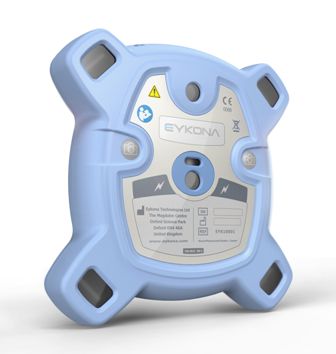3D imaging device enables dramatic improvement in wound care
13 November 2012
Oxford company Eykona Medical has developed an imaging device that can automatically measure the characteristics of diabetic wounds in 3D, faster and with greater consistency and accuracy than current manual techniques.
The cost of diabetic ulceration and amputation in the UK is about £650m annually, affecting over 60,000 people. The new device replaces current wound analysis techniques, including naked-eye assessment, tracing paper and pencil, dipstick depth measurement and relatively invasive resin casts, and observations recorded on hand-written paper notes.
Developed over eight years, starting at Oxford University, the Eykona device consists of two cameras and four high powered flash units in a light, mobile and easy-to-use unit. Small sterile ‘targets’ are used to set the focus and position of the camera. This eliminates inconsistency between images and can be used by any health care professional without the need for extensive or costly training.

The Eykona wound camera
The Eykona system builds a 3D image and utilises specially designed software to measure size, depth and skin tone with precision and detail at the sub-millimetre level. It creates a detailed 3D model of any wound or scar from which accurate measurements of distance, area, colour, width or volume can be made. Using rendering software, the 3D model can be assessed from all angles and shared with other clinicians through server or cloud-based hosting of the data.
Changes in the wound can be recorded over time, giving valuable information on the status of the tissues in the wound bed. Clinicians can then use definitive evidence to understand if and how the wound is healing, allowing them to adjust the treatment plan efficiently.
Dr James Paterson, one of the inventors of the Eykona system commented, “One of the risks of inaccurate measurement and treatment of diabetic wounds is amputation, with 50% of people who have a major amputations dying within two years. Through the use of the Eykona system, many of these amputations could be avoided through more precise, efficient and effective care resulting from accurate 3D measurement.
“By replacing archaic, basic and expensive processes, Eykona is not just saving time and money, but lives. It means more measurements can be taken, in less time, by any number of healthcare professionals. They can then be shared with clinicians and specialists anywhere in the world if needed, improving the standard of care and reducing travel costs.”
Early adopters include the Royal Centre for Defence Medicine, which is currently using the device in the field to help treat the wounds of soldiers in Afghanistan as well as mapping impacts on body armour to improve research and development.
The device is currently being used by a small number of NHS trusts, and is expected to receive full approval for medical use later this year.